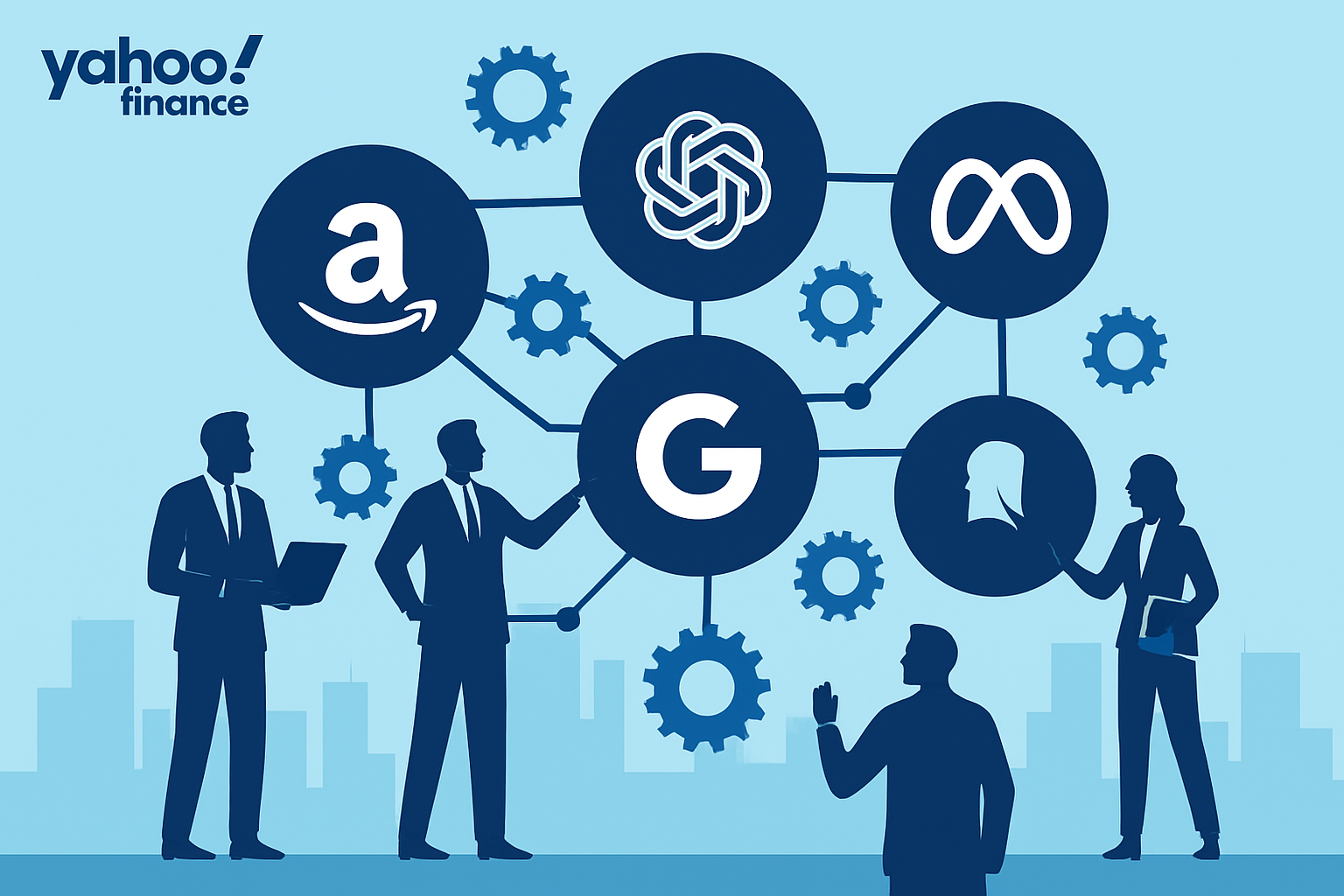As artificial intelligence continues to drive trillion-dollar valuations across Silicon Valley, the old lines separating competitors are being redrawn. Microsoft, Google, Meta, and Amazon—longtime rivals in cloud, software, and advertising—are now entering strategic partnerships that both empower and entangle them. The AI arms race has evolved into an intricate web of shared compute, mutual dependencies, and cross-licensing agreements that raise an urgent question for investors: how stable is this new ecosystem of “coopetition”?
The New Map of AI Alliances
In recent months, industry alliances have multiplied. OpenAI, while backed heavily by Microsoft, continues to integrate AMD’s chips alongside Nvidia’s GPUs. Meta and Google have discussed shared infrastructure initiatives for open-source AI frameworks, while Microsoft cross-licenses technologies with Anthropic, despite both competing for enterprise AI dominance.
According to Business Insider and Reuters, this convergence is driven by necessity more than choice. The demand for compute power—especially for training large language models—has vastly outpaced global chip supply. No single firm can independently sustain the capital intensity required to dominate AI. As a result, even trillion-dollar companies are pooling resources and signing long-term strategic agreements with direct competitors.
Why This Matters for Investors
This shift represents a double-edged sword. On one hand, it signals extraordinary efficiency and scalability. Shared infrastructure reduces redundancy, accelerates innovation, and maximizes hardware utilization—a boon for shareholders seeking capital discipline. On the other, it introduces structural risk: each firm becomes more vulnerable to supply chain shocks or policy changes affecting a partner.
For example, if AMD or Nvidia were to face export restrictions, it could ripple across multiple AI ecosystems—from Microsoft Azure’s model training to Meta’s inference workloads. Likewise, the recent U.S. scrutiny of AI partnerships, such as the Department of Justice’s review of Microsoft’s OpenAI ties, illustrates how regulators are increasingly wary of potential anti-competitive dependencies.
From a market standpoint, this interconnectedness means investor exposure is less diversified than it appears. Funds holding positions across these giants may unknowingly be concentrated in the same technological bottlenecks—particularly GPU access and data center capacity.
The Economics of “Coopetition”
The current AI landscape is less about product differentiation and more about control of infrastructure and data. According to a McKinsey analysis, global AI infrastructure spending is projected to exceed $400 billion by 2030, with hyperscalers accounting for 70% of that investment.
As such, partnerships between these hyperscalers are not purely strategic—they’re existential. Each needs to ensure compute continuity, secure model interoperability, and sustain growth without triggering regulatory backlash. Yet, this raises a sustainability dilemma: how long can cooperation last when the next frontier of AI (autonomous agents, synthetic data, or multimodal reasoning) demands even more exclusive access to compute and data?
Analysts at Goldman Sachs have warned that “AI alliances could become chokepoints,” where one partner’s overdependence could suppress innovation or distort capital allocation. These partnerships may amplify short-term gains but introduce systemic fragility if the web of cooperation begins to fray.
Future Trends to Watch
- AI Infrastructure Localization — Expect a push toward regional data centers and sovereign AI strategies, especially as governments demand more transparency around cross-border data flows.
- Hardware Diversification — Watch for companies accelerating in-house chip programs, such as Amazon’s Trainium or Google’s TPU, to reduce dependency on third-party suppliers.
- Regulatory Intervention — Antitrust regulators in the U.S. and EU are increasingly examining these “coopetition” models, which could reshape partnership dynamics.
- Capital Expenditure Decoupling — As AI budgets surge, firms may pivot to joint ventures or infrastructure-sharing agreements to limit balance-sheet strain.
Key Investment Insight
Investors should monitor the durability of AI partnerships as a proxy for stability in the broader tech sector. Focus on companies that balance collaboration with vertical integration—those building their own chips, software stacks, or sovereign data frameworks. Firms overly reliant on a single partner or hardware ecosystem may face valuation compression if the partnership landscape shifts or regulatory barriers rise.
In essence, the AI boom has become an ecosystem play, not a single-company race. The winners will be those who can both collaborate and compete—without losing strategic control.
Stay ahead of the evolving AI investment landscape with MoneyNews.Today — your trusted source for daily financial intelligence and market analysis.





